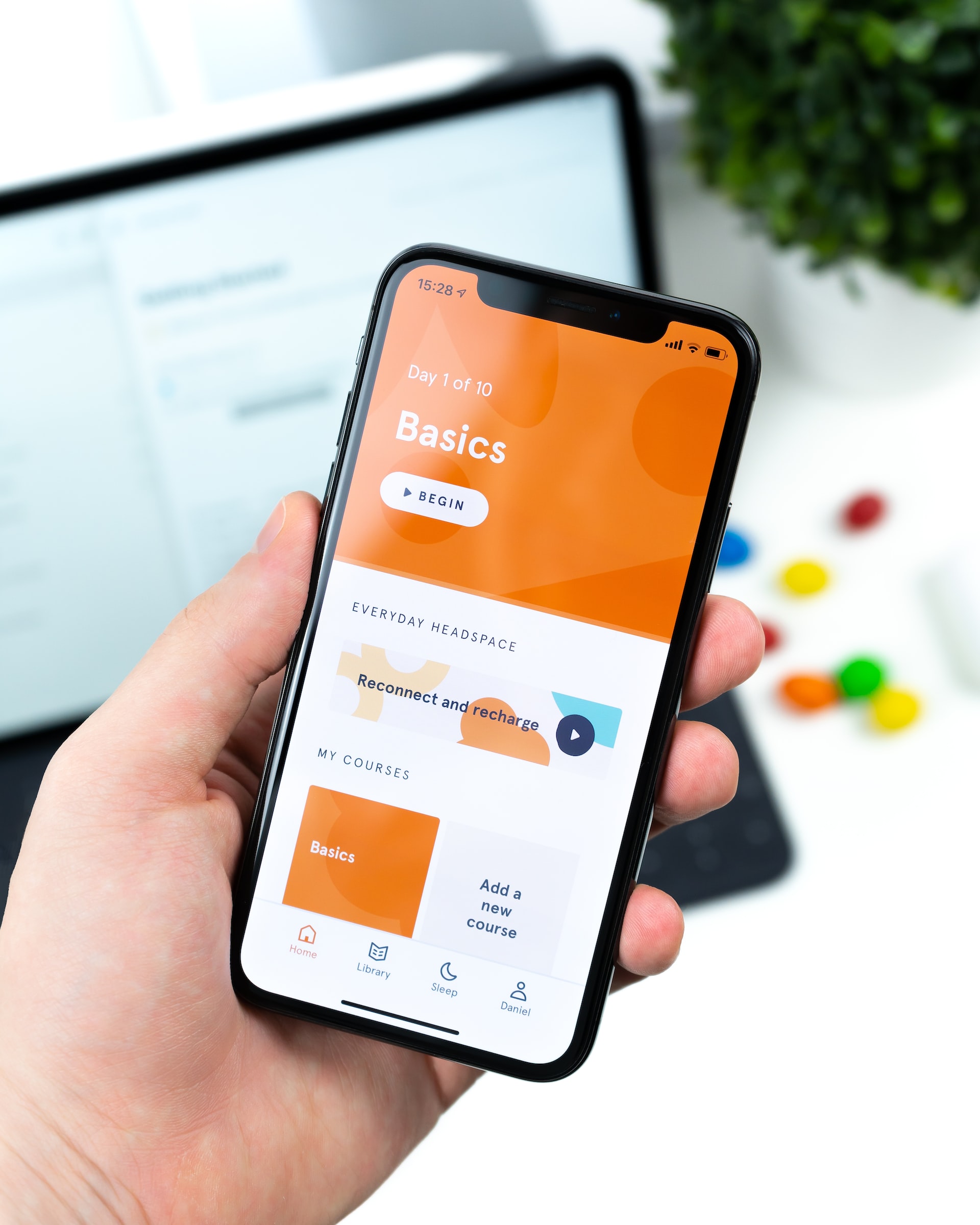We all use our phones for at least some of our online shopping, so it goes without saying that B2B companies receive a ton of traffic from mobile devices.
Companies must do a b2b mobile optimizationto their websites to give potential customers a convenient user experience.
Does This Apply To B2B Websites As Well?
Many websites receives just approximately 20% of its traffic from mobile devices, and conversion rates are also low (13% of our inbound conversions came from mobile).
Google, on the other hand, gives mobile-friendly websites higher SERPpositions.
Additionally, you never know which door your potential customer will choose to knock on first. Therefore, it appears that mobile optimization is still important.
Does it make sense to take a few more weeks when constructing your website? We'll see.
What Impact Does B2B Mobile Optimization Have?
Generation
Many of the leads that your businessreceives online-likely a sizable portion—are generated by search engines. Google's algorithms are constantly being updated, and they now give mobile-friendly websites a higher preference.
This results in decreased activity, fewer clicks on unique links, and a slower rate of lead creation.
Without a mobile-friendly website, 40% of users (your potential leads) will visit a competitor's website rather than put up with a subpar mobile site, claims Google.
To collect inbound leads, your site must also be mobile-optimized.
New site visitors are frequently unfamiliar with your company and are still learning about your goods and services.
Your website requires a simple way to collect those leads before moving to the nurturing stage.
Nurturing
You must nurture new leads until they convert once you've produced them. Lead generation and nurturing are both impacted by your website in similar ways.
You need a high-quality, mobile-friendly website to draw in visitors who have expressed interest but haven't yet made a commitment.
Any links in emails sent to subscribers of a newsletter or email marketingcampaign should direct them to an optimized website, whether they are accessing it on a PC or a mobile device.
Unsurprisingly, 54% of the more than 1 billion monitored emails opened in 2016 did so on mobile.
If a person clicks on a mobile link that takes them to a non-optimized website, they may leave without reading any of your material.
Conversion
Most studies show that consumers much prefer interacting with and making purchases through websites rather than sales representatives.
Having a website that is simple to use on computer and mobile screens can help you convert your B2B leadsmore effectively.
According to another Google study, 42% of researchers utilize a mobile device of some kind during their B2B buyer's journey.
In B2B, mobile device usage increased by 91% between 2014 and 2015, throughout the whole purchasing process.
Overall, B2B mobile website purchase rates increased by 22% in 2015 when it comes to lead conversion.
If your website doesn't work well with mobile devices, it will be harder for you to convert the leads you find and nurture.
SEO And Mobile Optimization Go Hand In Hand
The source of more than half of website traffic is natural search. Search engines give priority to mobile devices when ranking websites because the majority of those queries take place on mobile devices.
Even the highest quality material may go unnoticed by audiences if a company's website and contentare not mobile-optimized.
For instance, while mobile page load speed might seem like a minor factor, it plays a significant role in a website's Google search ranking.
This seemingly unimportant feature can have a significant impact on website traffic because Google accounts for 94% of all organic search traffic.
To help businesses understand their rankings, Google offers a test for mobile friendliness.
It is crucial to actively examine and revise SEO, current algorithms, and best practices.
Our Communication Relies Heavily On Mobile Phones
There's a reason we keep using the phrase "mobile devices" even though they resemble little computers more than just regular phones today. The main purpose of our mobile gadgets is still communication.
Mobile optimization for B2B salesand marketing includes site content. Email, social networking, SMS, business-specific apps, integrated third-party apps, and other mobile-centric technologies are also included.
According to Campaign Monitor, 47 percent of poll participants check their email on a mobile device.
A company's ability to effectively and consistently communicate with customers and prospects can make or break it.
Make sure you're optimized for the communication channels your target market already uses, and don't be afraid to learn how touse new platforms and devices to take part.
When and where prospects are looking for it, material that has been optimized for mobile displays credibility and knowledge.
Today's consumers look to their mobile devices for answers when they have questions.
Buyers will regard companies that present themselves as reliable and valuable resources as authorities and industry leaders.
When thought leadershipcontent is optimized for mobile, people who are looking for solutions are much more likely to find it.
While mobile and screen-friendly designs are vital, target markets should also be taken into account when choosing content types.
Utilize mobile content that offers the target audience value across a range of media and mediums.
Blogs, white papers, articles, social media, video, podcasts, and webinars are a few examples.
A Guide To Mobile Optimization
Try Small Screen-friendly Blogs
71% of consumers said company blogs were helpful in helping them make a decision on a final purchase, demonstrating the importance of these blogs in the B2B customer journey.
However, the general way in which your target audience consumes material is evolving. According to an eMarketer poll, people access more than a fifth of the media content they watch or listen to on mobile devices.
B2B marketers must take care to make their material simple to read. Depending on the size of the reader's screen (for example, if they are using a small tablet instead of a phone), the layout needs to be flexible and work well.
To fully implement a mobile-first strategy, content strategists and web designers must collaborate to decide how things should appear on mobile devices first, followed by desktop computers.
Don't arbitrarily remove photos, videos, or even whole paragraphs of text because mobile users still want all the information. Instead, make an effort to reduce their size and rearrange them in a logical order while taking the visual hierarchyinto account.
It's crucial to think about things like line and paragraph spacing, where images and advertisements are placed, and clickable spots.
Further, decide where AMP pages will be most effective and implement them early.
If a post or resource is too long, think about employing expandable parts. They are now not detrimental to SEO.
Reduce the size and quantity of the pop-ups urging users to talk, subscribe, and do other activities.
Check that the desktop version of any WordPressor other CMS plugin you use works.
Employ Mobile SEO Techniques
According to a research, when searches were made from mobile devices, the results differed greatly.
For the terms they looked at, roughly half of the URLs in positions 1 to 20 had different rankings.
Additionally, 35% of the results on the first page turned out to be completely different.
Mobile device searches frequently involve questions, especially when a voice assistant like Siri is being used.
They'd be more inclined to ask a question in the form of their search, such as "What time does TD Bank open?" or "Which CRM service has the best reviews?"
These inquiries also help to better define the searcher's intentions.
It's also worth noting that voice assistants will get their information from answer boxes or search results that include rich snippets.
This is due to structured data, which allows Google to determine how relevant the content is.
When doing keyword research, content marketers should focus on long-tail keywords and narrow their focus so they can give clear, concise answers to specific questions that are based on context.
This will help them optimize their content for mobile searches.
Concentrate On What Activates Conversions
Give your customers what they want, when they want it, and you'll improve the mobile experience.
People usually use their mobile devices because they want to save time and don't want to look through long, text-heavy webpages to find what they want or buy something.
When engaging with a B2B audience as opposed to a B2Caudience, your conversion targets will differ very significantly.
B2B buyers' journeys are much longer and more complicated, but you can get leads to convert by making small changes to pop-ups, push notifications, display ads, or landing screen CTAs based on the content of their previous visits.
You may add dynamic content to both mobile and desktop versions based on the visitor's contextual attributes using some CMS platforms, like HubSpot, and website builder tools, like Duda.
This creates a tailored experience for each engagement with your business.
Your website can automatically emphasize particular content or CTAs based on where a user is in the buyer's journey by tracking particular accounts.
A call-scheduling widget, for example, can be configured to only show up for qualified leads who are prepared to contact a salesperson.
Compare Websites, Apps, And PWAs
Even though many B2B companies don't require it (but SaaS and other digital verticals do), developing an app is a terrific approach to immediately improve client experience and service alternatives.
This is especially beneficial for B2B businesses that offer software services.
Making a Progressive Web App (PWA), which provides an app-like experience without requiring an actual app download, is an additional choice. After realizing that these devices were the primary source of traffic, Forbes.com developed a PWA for its mobile site. The design looks more like an app than a scaled-down version of a regular website.
This makes it easier for users to move between articles and gives them a better overall experience.
Pay attention to preserving a similar UX between your app and website. Companies frequently try to save moneyby making their mobile versions less effective and strong, but in the end, they risk losing customers.
For instance, consider the Booking.com-affiliated restaurant reservation site OpenTable.
Users of the desktop version can go between view panels to check on reservations and other crucial information. Additionally, patrons always have access to the restaurant's layout.
However, while trying to map out bookings on the mobile app, consumers are unable to view the current floor layout.
The UX wheel is pierced by a large spoke as a result.
It is best for all digital editions to look and feel the same so that users can have a smooth experience no matter what device they are using.
How To Implement A Mobile Optimization Plan
Make The Experience Mobile-friendly
Customers want websites to be simple to browse and use on mobile devices because they spend so much time on them.
In April 2015, Google introduced an upgrade to its search results ranking algorithm in response to this new normal, giving websites that are mobile-friendly priority.
Even the rank at which websites appear on desktop and mobile devices can differ.
Thankfully, there are a few essential steps you can take to make sure you appear to smartphone searchers.
Ensuring that your website works smoothly on a mobile device is the most important step. This pertains to both the structure and content of your website.
You can change it by using "mobile-first" design principles or "responsive" design principles.
You should also think about how your material will be presented on the page. By dividing your material into manageable bits, you can adapt to a wide range of smartphone screen sizes.
Your web developer should be able to help you code an interface for viewing that works on both a computer and a phone.
Make Use Of Mobile Search Capabilities
Think back to the last time you used your smartphone to look for a restaurant. Google's search results would have most certainly included a map, instructions, website, and phone number.
You have access to a substantial amount of information. Say you were checking to see if the restaurant was busy. You may make the call without even having to dial; you may just tap the phone number on your phone.
Convenience is the key component of the mobile experience, and B2B customers are no exception. It's very crucial when you network at gatherings like trade shows, where potential clients might subsequently look you up.
Ensure that you claim your Google My Business listing so that you can control the data that appears in search results for your brand.
On their smartphones and at their convenience, people can call, locate your office, or visit your website when they search for you in this way.
Be Prepared For What Is To Come
Smartphones are without a doubt the wave of the future. There has never been a better time to interact with B2B consumers in fresh and engaging ways as PC usage continues to decline.
The first step in reaching your audience where they spend the most screen time is to optimize your website for a mobile experience.
Once you've established a solid base, you can add mobile ads, social media, videos, and even applications to further entice potential customers to your website. Since consumers can't live without mobile phones, brands can't either, it stands to reason.
People Also Ask
What Is Mobile Optimization?
Mobile optimization is the act of changing the content of your website so that users who access it from mobile devices have a unique experience.
What Is Mobile Optimization In Marketing?
Any marketer working to increase a brand's online visibility and reach should assess their efforts for mobile optimization.
Mobile optimization is the process of making changes to your website so that people who access it from a mobile device have a great and interesting experience.
Why Is Mobile Optimisation Important To A Business?
Because of the customer satisfaction. Regardless of the device they use to access your website, mobile optimization aims to keep users happy.
Recognize that satisfied customers are more inclined to purchase your goods or services. They will trust your brand much more if they are happy.
Conclusion
There is no denying that during the purchasing process, B2B buyers use mobile devices to gather information and make decisions.
To stay ahead of the competition and give customers the best experience, it makes sense for B2B marketers to switch to a mobile-first strategy as soon as possible.


